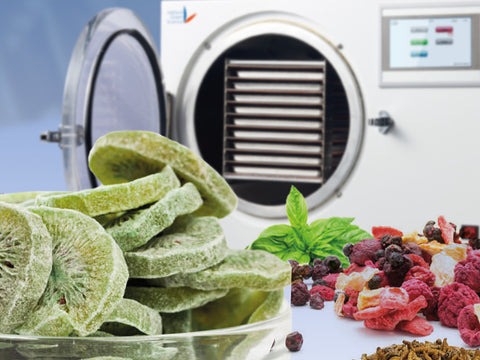Introduction to Freeze-Dried Food
Freeze-dried food has become increasingly popular among outdoor enthusiasts, survivalists, and even busy individuals seeking convenient meal options. This preservation method offers long shelf life and retains much of the food’s original flavor and nutritional value. But how does freeze-drying work, and what makes it different from other food preservation techniques? To understand this, we must delve into the science and process behind freeze-drying, exploring its history, methodology, benefits, and applications.
The Freeze-Drying Process
Freeze-drying, or lyophilization, is a preservation technique that involves three key stages: freezing, primary drying (sublimation), and secondary drying (desorption). The process begins by rapidly freezing the food to temperatures below -40°F (-40°C), which transforms the water inside the food into ice. Once frozen, the food is placed in a vacuum chamber. During primary drying, the pressure is lowered, and heat is applied to the food, causing the ice to sublimate, or turn directly from a solid to a gas, bypassing the liquid phase. This removes approximately 95% of the water content. In the secondary drying phase, any remaining moisture is removed to ensure long-term stability. This final step is crucial for preventing microbial growth and spoilage.
Benefits of Freeze-Dried Food
One of the major benefits of freeze-dried food is its extended shelf life. Unlike canned or dehydrated foods, freeze-dried products can last 20 to 30 years or more if stored properly. This extended shelf life is due to the removal of water, which inhibits bacterial and mold growth. Additionally, how does freeze dried food work retain much of their original nutritional value and flavor. The process preserves the structure of the food, allowing it to rehydrate more effectively when needed. This makes freeze-dried food an excellent choice for emergency preparedness, camping, and long-term food storage.
Applications and Uses
Freeze-dried food has a wide range of applications beyond camping and emergency preparedness. It is commonly used in the space industry to provide astronauts with nutritious, lightweight meals. The convenience of freeze-dried meals also extends to the military, where soldiers benefit from easy-to-carry, nutritious rations. Additionally, the consumer market has embraced freeze-dried fruits, vegetables, and meals as convenient options for busy lifestyles. Freeze-drying is also used in pharmaceuticals and biotechnology to preserve sensitive biological materials, such as vaccines and enzymes.
Conclusion: The Future of Freeze-Drying
As technology advances, the freeze-drying process continues to evolve, offering new possibilities for food preservation and beyond. Innovations in freeze-drying techniques, such as improved equipment and more efficient processes, promise to enhance the quality and affordability of freeze-dried products. The continued development of this technology could lead to even greater applications and benefits, making freeze-dried food an integral part of our lives and industries. Understanding how freeze-drying works and its advantages provides insight into why it is a preferred method for preserving food and other sensitive materials.
Keep an eye for more news & updates on Times Analysis!



